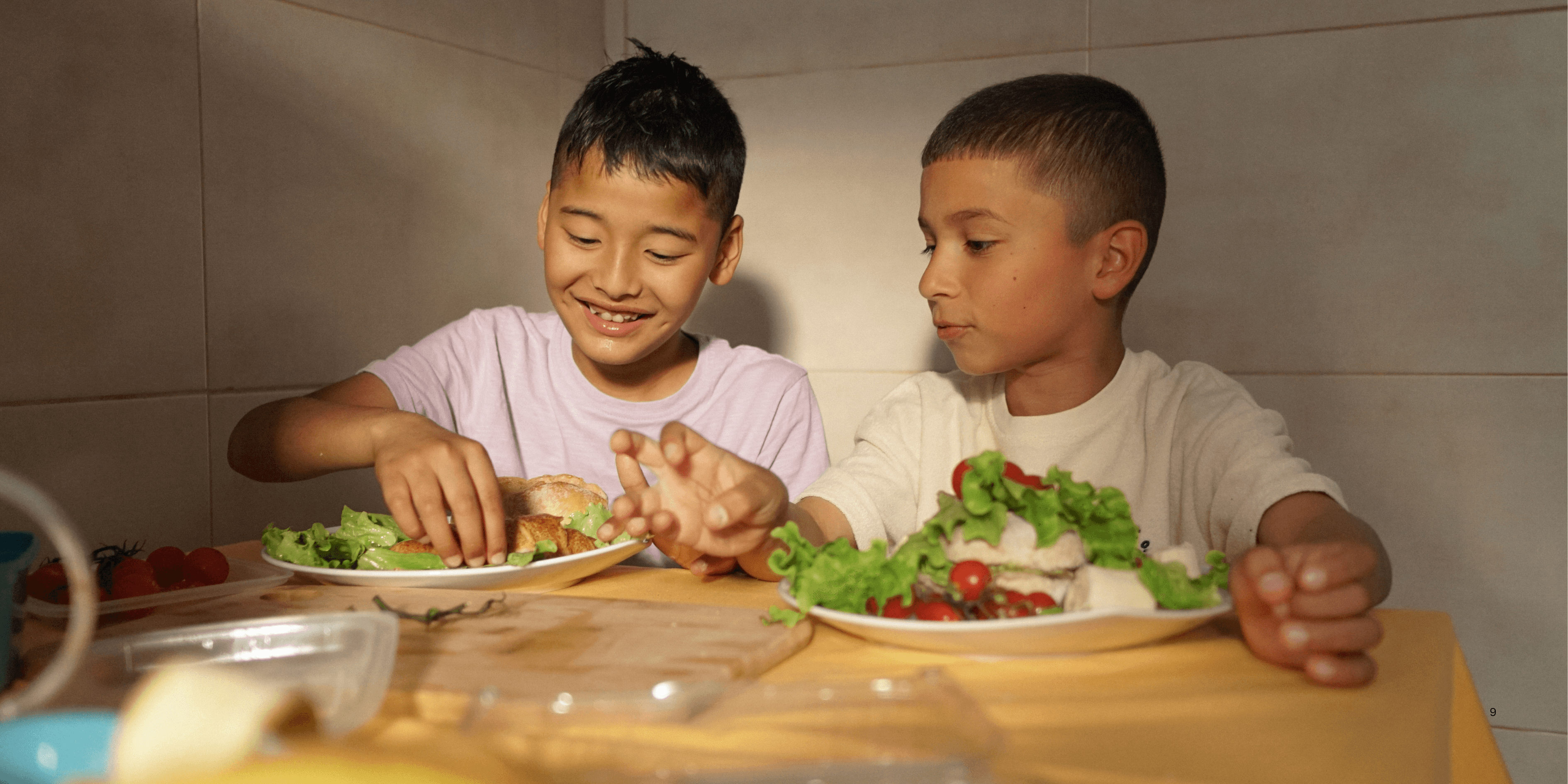
“
Establishing healthy eating habits in kids is a vital step toward a lifetime of well-being, strong development, and emotional balance. It’s more than just adding vegetables to meals—it’s about shaping attitudes toward nutrition, encouraging involvement in food choices, and making meals a source of learning and joy. 1
1
”
Children are more likely to enjoy healthy foods if they help prepare them. Involving kids in grocery shopping and cooking builds curiosity and pride, making them more open to nutritious meals. 1
Studies show that families who eat meals together at the table encourage better food choices. These shared moments increase communication, reduce overeating, and make nutritious eating part of family culture. 2

Offering fruits and vegetables in fun shapes or patterns increases children’s interest. Visual appeal plays a big role in food acceptance, especially for picky eaters, making healthy meals more exciting.
Avoid using food as a reward or punishment. This creates emotional ties to eating that can lead to unhealthy behaviors. Instead, praise non-food achievements to encourage better emotional regulation. 3
Introducing new foods alongside familiar favorites helps children feel safe trying something different. Repetition matters; it may take several attempts before a child learns to enjoy a new taste or texture. 4
Limiting sugary drinks like sodas and flavored juices significantly improves a child’s nutrition. Replacing them with water or milk helps reduce unnecessary sugar intake and improves hydration. 5
Healthy snacking between meals can stabilize blood sugar and prevent overeating later. Keep snack options like apple slices, yogurt, or nuts available, rather than chips or candies, for better energy levels. 6
Breakfast is essential for children’s focus and energy at school. Skipping breakfast has been linked to poor memory, lower academic performance, and higher risk of obesity due to unhealthy snacking later. 7

When children grow their own food—even herbs or vegetables in pots—they gain a sense of ownership and are more inclined to eat what they’ve helped produce, encouraging deeper interest in nutrition.
Avoid labeling foods as “good” or “bad.” Instead, explain how some foods help our bodies grow strong while others are for occasional enjoyment. This builds food confidence and prevents guilt-driven habits. 8
Portion control can teach children to listen to hunger and fullness cues. Serving food in child-sized portions reduces waste and helps them develop self-regulation and mindful eating skills over time. 9
Peer influence is powerful. Kids who see their friends eating fruits or vegetables are more likely to try them too. Group settings like lunchrooms or camps can positively shape eating habits socially. 10
Using fun names like “X-ray carrots” or “superpower spinach” sparks kids’ imaginations. This playful approach can make meals more enjoyable and increase willingness to try healthy options. 11
Keep healthy foods at eye level in the fridge or pantry. Kids naturally reach for what they see first, so make nutritious choices more accessible than processed or sugary snacks. 12
Children model adult behavior closely. Parents and caregivers who eat balanced meals without complaints about food inspire kids to follow suit and develop similar patterns over time. 13

Encourage kids to rate foods based on taste, texture, and color. This turns eating into a game and helps children become more curious about the ingredients, textures, and health benefits of what they consume.
Maintain consistent mealtimes to help kids feel secure and regulate appetite. Predictable eating routines train their bodies and reduce emotional eating, improving digestion and nutrient absorption as well. 14
Allowing children to serve themselves from a shared dish boosts their independence and portion awareness. It also reduces power struggles and teaches kids to make thoughtful food decisions at the table. 15
Cookbooks with kid-friendly visuals and simple recipes encourage children to be more hands-on with food preparation. Familiarity with ingredients nurtures comfort and long-term interest in healthy eating. 16
Doctor Maria Montessori emphasized hands-on learning, even in eating. She believed involving kids in meals teaches respect for food, independence, and healthy habits early on. 17


